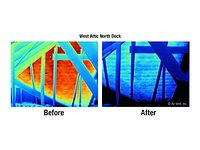
©iStockphoto.com/JackValley
Established by Charles R. Walgreen Sr. more than 100 years ago in a modest 20-foot by 50-foot shop on Chicago’s South Side, Walgreens has grown into the nation’s largest retail pharmacy chain. The company currently operates more than 6,500 stores in 49 states, the District of Columbia and Puerto Rico. Walgreens is expected to open 495 new pharmacies next year, bringing the number of Walgreen-run pharmacies to more than 7,000 by 2010.
To continually replenish the products within its stores, Walgreens has placed an emphasis on updating its distribution network. The company recently erected a distribution center in Anderson, S.C., that will provide fast shipment to Walgreen pharmacies throughout the eastern United States. The new center is expected to be 20 percent more efficient than the company’s previous generation of distribution centers. When running at full capacity, it will be able to ship approximately 80,000 cases of goods per day to more than 700 Walgreens stores.

Installing
the computer automated logistics system was a time-consuming process that
required the warehouse to be built in sections. A fully adhered EPDM roof
system manufactured by Carlisle SynTec was specified for the project. (Photo
courtesy of Carlisle SynTec.)

Walgreens’
new distribution center in Anderson, S.C., is designed to provide fast shipment to the
company’s pharmacies throughout the eastern United States. (Photo courtesy of
Carlisle SynTec.)
To help them select the most durable, economical and user-friendly roof system for their new warehouse, Walgreens turned to RRK Associates Ltd., a commercial and industrial roof consulting firm located in Gurnee, Ill. After considering numerous options, Guy Snowden, principal and roof consultant at RRK Associates, opted for a fully adhered EPDM roof system manufactured by Carlisle SynTec. According to Snowden, EPDM was the most logical choice and Carlisle’s membrane was the most cost-efficient option available.
Peach State Roofing, a Carlisle authorized applicator from Lawrenceville, Ga., won the bid to install the Carlisle roof system and began installation in April 2006. Peach State has been a Carlisle applicator since 1991 and has installed more than 21 million square feet of warranted Carlisle roof systems, so their vast knowledge and expertise with the products helped keep the large warehouse project on schedule.
In fact, Peach State requested that the EPDM membranes being installed feature Carlisle’s innovative Factory-Applied Tape (FAT™), a unique seaming system that drastically increases installation speed. “We really like using Carlisle’s membranes with the Factory-Applied Tape, because of the ease of installation,” commented Dave Schmitt, vice president of Peach State Roofing.
Applied under Carlisle’s strict, factory-controlled environment, FAT provides uniform adhesive width and thickness and reduces the risk of human error during seam installation. In side-by-side comparisons, Carlisle membranes featuring FAT seam technology have been proven to reduce seaming time by 75 percent, while cutting labor requirements by one-third, when compared to other tapes available in the marketplace. Familiar with the FAT system, Peach State knew that it was the only way to maintain the blistering construction pace. FAT also reduces the risk of seam failure by delivering 30 percent greater peel strength and 32 percent greater shear strength.
Working closely with Peach State was N.B. Handy, Carlisle’s manufacturer’s representative and distributor in South Carolina. N.B. Handy delivered the materials directly to the jobsite from its nearby Greenville, S.C., warehouse, which kept Peach State fully supplied with all of the necessary products for each day’s work. Because the roof was installed in sections over an 11-month time period, the jobsite delivery service provided Peach State with enough material to continue working without overloading the site with materials that would not be installed for months.
Another positive aspect of the delivery service was that it helped cut down on transportation costs that would have been experienced had the material been delivered to Peach State’s offices and then transported to the site from there. “On a job like this, jobsite delivery is key to keeping the costs to a minimum and keeping production high,” said Schmitt.
Peach State began the roof installation by mechanically attaching two layers of Carlisle’s polyisocyanurate insulation to the building’s 700,000-square-foot steel roof deck. They first loose laid a 1½-inch layer of the polyiso and topped it with a 2-inch layer of the insulation before fastening both to the deck with Carlisle’s HP-X Fasteners. The second layer was offset from the first layer so the seams were not directly on top of one another. This is a common technique that eliminates thermal bridging and further enhances the energy-efficient performance of a building’s rooftop.
After the insulation was installed, Peach State began rolling out the 20-foot by 100-foot EPDM membranes. They fully adhered the 60-mil, non-reinforced sheets using Carlisle’s bonding adhesive. After laying the membranes into the adhesive, Peach State rolled them with a 100-pound metal roller to ensure proper adhesion and performance. They completed the installation by seaming the membranes together using the Factory-Applied Tape and then flashed all of the penetrations with Carlisle’s pressure-sensitive accessories.
“Carlisle has really outdone themselves with their Factory-Applied Tape and the self-adhesive flashing accessories,” commented Schmitt. “These innovative products are incredibly easy to work with and they really cut down on irregularities during installation.”
The rooftop is backed by a 15-year total system warranty that will ensure years of protection for all of the products inside, which is a good thing because after nearly 110 years in business and with its current expansion, it doesn’t look like Walgreens is going anywhere anytime soon.


